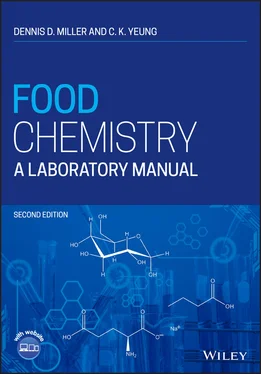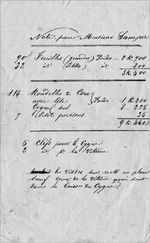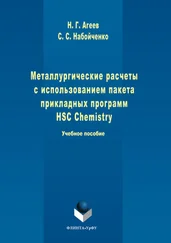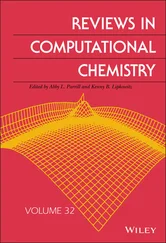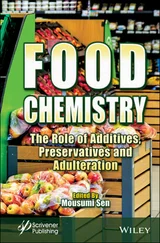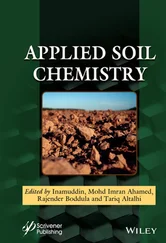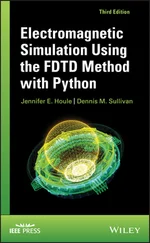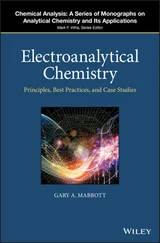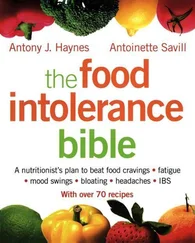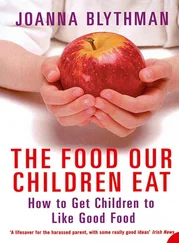Dennis D. Miller - Food Chemistry
Здесь есть возможность читать онлайн «Dennis D. Miller - Food Chemistry» — ознакомительный отрывок электронной книги совершенно бесплатно, а после прочтения отрывка купить полную версию. В некоторых случаях можно слушать аудио, скачать через торрент в формате fb2 и присутствует краткое содержание. Жанр: unrecognised, на английском языке. Описание произведения, (предисловие) а так же отзывы посетителей доступны на портале библиотеки ЛибКат.
- Название:Food Chemistry
- Автор:
- Жанр:
- Год:неизвестен
- ISBN:нет данных
- Рейтинг книги:3 / 5. Голосов: 1
-
Избранное:Добавить в избранное
- Отзывы:
-
Ваша оценка:
- 60
- 1
- 2
- 3
- 4
- 5
Food Chemistry: краткое содержание, описание и аннотация
Предлагаем к чтению аннотацию, описание, краткое содержание или предисловие (зависит от того, что написал сам автор книги «Food Chemistry»). Если вы не нашли необходимую информацию о книге — напишите в комментариях, мы постараемся отыскать её.
A manual designed for Food Chemistry Laboratory courses that meet Institute of Food Technologists undergraduate education standards for degrees in Food Science Food Chemistry: A Laboratory Manual
Food Chemistry: A Laboratory Manual
Food Chemistry — читать онлайн ознакомительный отрывок
Ниже представлен текст книги, разбитый по страницам. Система сохранения места последней прочитанной страницы, позволяет с удобством читать онлайн бесплатно книгу «Food Chemistry», без необходимости каждый раз заново искать на чём Вы остановились. Поставьте закладку, и сможете в любой момент перейти на страницу, на которой закончили чтение.
Интервал:
Закладка:
Table of Contents
1 Cover
2 Title Page
3 Copyright Page
4 Preface to the Second Edition
5 Preface to the First Edition
6 Acknowledgments
7 About the Companion Website
8 1 Acids, Bases, and Buffers1.1 Learning Outcomes 1.2 Introduction 1.3 Apparatus and Instruments 1.4 Reagents and Materials 1.5 Procedures 1.6 Problem Set 1.7 References 1.8 Suggested Reading Answers to Problem Set
9 2 Chemical Leavening Agents2.1 Learning Outcomes 2.2 Introduction 2.3 Apparatus and Instruments 2.4 Reagents and Materials 2.5 Procedures 2.6 Problem Set 2.7 Useful Formulas and Values 2.8 References 2.9 Suggested Reading Answers to Problem Set
10 3 Properties of Sugars3.1 Learning Outcomes 3.2 Introduction 3.3 Apparatus and Instruments 3.4 Reagents and Materials 3.5 Procedures 3.6 Study Questions 3.7 References 3.8 Suggested Reading
11 4 Nonenzymatic Browning4.1 Learning Outcomes 4.2 Introduction 4.3 Apparatus and Instruments 4.4 Reagents and Materials 4.5 Procedures 4.6 Problem Set 4.7 Study Questions 4.8 References 4.9 Suggested Reading Answers to Problem Set
12 5 Food Hydrocolloids5.1 Learning Outcomes 5.2 Introduction 5.3 Apparatus and Instruments 5.4 Reagents and Materials 5.5 Procedures 5.6 Study Questions 5.7 References 5.8 Suggested Reading
13 6 Functional Properties of Proteins6.1 Learning Outcomes 6.2 Introduction 6.3 Apparatus and Instruments 6.4 Reagents and Materials 6.5 Procedures 6.6 Problem Set 6.7 Study Questions 6.8 References 6.9 Suggested Reading Answers to Problem Set
14 7 Lactose7.1 Learning Outcomes 7.2 Introduction 7.3 Apparatus and Instruments 7.4 Reagents and Materials 7.5 Procedures 7.6 Experimental Design 7.7 Study Questions 7.8 References 7.9 Suggested Reading
15 8 Enzymatic Browning8.1 Learning Outcomes 8.2 Introduction 8.3 Apparatus and Instruments 8.4 Reagents and Materials 8.5 Procedures 8.6 Problem Set 8.7 Study Questions 8.8 References Answers to Problem Set
16 9 Blanching Effectiveness9.1 Learning Outcomes 9.2 Introduction 9.3 Apparatus and Instruments 9.4 Reagents and Materials 9.5 Procedures 9.6 Study Questions 9.7 References 9.8 Suggested Reading
17 10 Lipid Oxidation10.1 Learning Outcomes 10.2 Introduction 10.3 Apparatus and Instruments 10.4 Reagents and Materials 10.5 Procedures: Lipid Oxidation in Turkey Meat 10.6 Problem Set: Calculation of TBARS 10.7 Study Questions 10.8 References 10.9 Suggested Reading Answers to Problem Set
18 11 Ascorbic Acid11.1 Learning Outcomes 11.2 Introduction 11.3 Apparatus and Instruments 11.4 Reagents and Materials 11.5 Procedures 11.6 Problem Set 11.7 Study Questions 11.8 References Answers to Problem Set
19 12 Hydrolytic Rancidity in Milk12.1 Learning Outcomes 12.2 Introduction 12.3 Apparatus and Instruments 12.4 Reagents and Materials 12.5 Treatments and Controls 12.6 Procedures 12.7 Problem Set 12.8 Study Questions 12.9 References 12.10 Suggested Reading Answers to Problem Set
20 13 Caffeine in Beverages13.1 Learning Outcomes 13.2 Introduction 13.3 Apparatus and Instruments 13.4 Reagents and Materials 13.5 Operation of the HPLC 13.6 Procedures 13.7 Data Analysis 13.8 References 13.9 Suggested Reading
21 14 Color Additives14.1 Learning Outcomes 14.2 Introduction 14.3 Apparatus and Instruments 14.4 Reagents and Materials 14.5 Procedures 14.6 Study Questions 14.7 References 14.8 Suggested Reading
22 15 Plant Pigments15.1 Learning Outcomes 15.2 Introduction 15.3 Apparatus and Instruments 15.4 Reagents and Materials 15.5 Procedures 15.6 Study Questions 15.7 References 15.8 Suggested Reading
23 16 Meat Pigments16.1 Learning Outcomes 16.2 Introduction 16.3 Apparatus and Instruments 16.4 Reagents and Materials 16.5 Procedures 16.6 Study Questions 16.7 References 16.8 Suggested Reading
24 17 Meat Tenderizers17.1 Learning Outcomes 17.2 Introduction 17.3 Apparatus and Instruments 17.4 Reagents and Materials 17.5 Procedures 17.6 Study Questions 17.7 References 17.8 Suggested Reading
25 18 Detection of Genetically Engineered Maize Varieties18.1 Learning Outcomes 18.2 Introduction 18.3 Apparatus and Instruments 18.4 Reagents and Materials 18.5 Procedures 18.6 Study Questions 18.7 References 18.8 Suggested Reading
26 19 Food Emulsions and Surfactants19.1 Learning Outcomes 19.2 Introduction 19.3 Part I – Butter Churning (Phase Inversion) 19.4 Part II – Margarine Manufacture (Use of Surfactant for Semi‐solid Foods) 19.5 Part III – Dispersion of Eugenol in Water (Surfactant Solubilization Capacity) 19.6 Part IV – Mayonnaise Stability 19.7 References 19.8 Suggested Reading
27 Appendix I: Conversion Factors
28 Appendix II: Concentration Definition Suggested Reading
29 Appendix III: Acids, Bases, Buffers, and pH MeasurementReview of pH and Acid–Base Equilibria Acid/Base Equilibria The pH Scale pK Buffers: Functions and Uses Problems Choosing a Buffer System Preparation of Buffers Activity and Ionic Strength pH Measurement Making pH Measurements References Suggested Reading
30 Appendix IV: SpectrophotometryIntroduction Operation of a Spectrophotometer Problem Set References
31 Appendix V: ChromatographyWhat Is Chromatography? Chromatography Terminology Types of Chromatography High‐Performance Liquid Chromatography References Suggested Reading
32 Appendix VI: ElectrophoresisIntroduction References Suggested Reading
33 Appendix VII: Glossary
34 End User License Agreement
List of Tables
1 Chapter 1 Table 1.1 Acids common in foods: structures and p K avalues. Table 1.2 Approximate pH values for some common foods a.
2 Chapter 2 Table 2.1 Neutralizing values for some common leavening acids a.
3 Chapter 4 Table 4.1 Effects of storage on skim milk powder a,b.
4 Chapter 5Table 5.1 Some functional properties of food hydrocolloids a.Table 5.2 Functional properties of xanthan gum [4].
5 Chapter 8Table 8.1 Volumes of buffer, substrate, and enzyme extract for PPO assays.
6 Chapter 10Table 10.1 Volumes, concentrations, and absorbance values for standards in t...Table 10.2 Data for TBARS assay on raw and cooked turkey samples.
7 Chapter 11Table 11.1 Functions of naturally occurring and added ascorbic acid (or its ...Table 11.2 Chemical and physical properties of ascorbic acid.Table 11.3 Data for ascorbic acid (AA) standard curve.Table 11.4 Data from ascorbic acid titration experiment.
8 Chapter 12Table 12.1 Fatty acid composition of bovine milk fat [2].
9 Chapter 13Table 13.1 Caffeine content in a typical serving of some common beverages [5...
10 Chapter 14Table 14.1 FDA “certified” synthetic color food additives [4].Table 14.2 R fvalues a× 100 for synthetic food colors chromatographed on TLC plat...
11 Chapter 15Table 15.1 FDA approved “color additives exempt from batch certification” fo...
12 Chapter 19Table 19.1 Common food emulsions and their typical oil and water contents [1...Table 19.2 Applications of surfactants based on HLB values [3].
13 Appendix IITable II.1 Common expressions of concentration.
14 Appendix IIITable III.1 pKa values for some common biological buffers [3].Table III.2 Some standard buffers, pH ranges where they are effective buffer...Table III.3 Stock solutions and formulas for mixing buffers.Table III.4 Values for x (see Tables III.2 and III.3) to make up various buf...Table III.5 Values for activity coefficients of some ions at different conce...
15 Appendix IVTable IV.1 Classification of electromagnetic radiation and effects of radiat...
List of Illustrations
1 Chapter 2 Figure 2.1 Rates of CO 2production from mixtures of SALP and MCP‐H 2O, SAPP‐4... Figure 2.2 Apparatus for collecting and quantifying the volume of gas releas...
2 Chapter 3 Figure 3.1 Three representations of the structure of glucose, a polyhydroxyl... Figure 3.2 Balanced equation showing the nucleophilic attack of the C‐5 hydr... Figure 3.3 The formation of sucrose, a 1,2‐glycoside, from glucose and fruct...
Читать дальшеИнтервал:
Закладка:
Похожие книги на «Food Chemistry»
Представляем Вашему вниманию похожие книги на «Food Chemistry» списком для выбора. Мы отобрали схожую по названию и смыслу литературу в надежде предоставить читателям больше вариантов отыскать новые, интересные, ещё непрочитанные произведения.
Обсуждение, отзывы о книге «Food Chemistry» и просто собственные мнения читателей. Оставьте ваши комментарии, напишите, что Вы думаете о произведении, его смысле или главных героях. Укажите что конкретно понравилось, а что нет, и почему Вы так считаете.
